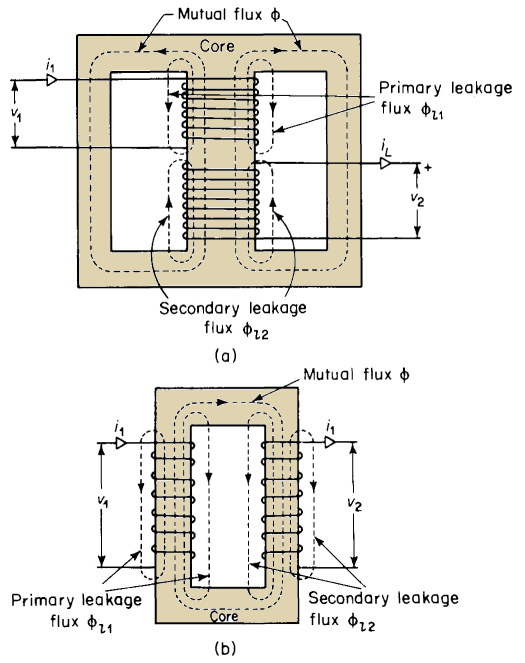| Capacitors, Magnetic Circuits, and Transformers is a free introductory textbook on the physics of capacitors, coils, and transformers. See the editorial for more information.... |

|

Home  The Transformer The Transformer  Equivalent Circuit of the Transformer Equivalent Circuit of the Transformer  Exciting Current, Conductance, and Susceptance Exciting Current, Conductance, and Susceptance |
|||||||||||||






|
|||||||||||||
Exciting Current, Conductance, and Susceptance
The general subject of exciting current, core-loss current and magnetizing current was taken up in Chapter 5 in connection with reactors. Figure 5-10 showed equivalent circuits for a reactor. When capacitance effects are neglected, as is done in this discussion, a transformer operating at no load performs like a reactor and the only current that flows is in the primary. This no-load primary current is the exciting current. However, if the secondary is closed to a load, such that a current IL flows in the secondary winding, then the primary must carry a component N2IL/N1 = IL' in addition to the exciting current Iexc. The component N2IL/N1 in the primary current is required to overcome the mmf N2IL of the current in the secondary winding. It is a simple matter to modify the equivalent circuit of the ideal transformer to take into account the exciting current. This is done by connecting the parallel circuit, which consists of the exciting admittance yexc1 = g1 - jb1, across the primary of the ideal transformer, as in Fig. 6-6(a). Then
and
also
where Iexc1, Imag1 and Ic1 are the exciting current, the magnetizing current and core-loss current, respectively, in the primary winding. Under load, the primary current is the phasor sum expressed by
This addition is shown graphically in the phasor diagram of Fig. 6-6(b).
|
|||||||||||||
Home  The Transformer The Transformer  Equivalent Circuit of the Transformer Equivalent Circuit of the Transformer  Exciting Current, Conductance, and Susceptance Exciting Current, Conductance, and Susceptance |
|||||||||||||
Last Update: 2011-01-06







